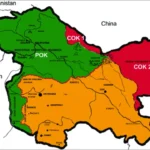Innovative road technology promises a future without potholes or construction delays
Berlin, Germany – In a revolutionary leap for infrastructure engineering, Germany has unveiled a groundbreaking road technology that could transform global transportation: self-healing roads that repair themselves when it rains. This futuristic solution eliminates the need for manual repairs, road closures, or maintenance crews, offering cities and drivers an uninterrupted and sustainable driving experience.
The innovation is the result of years of research led by scientists at the Fraunhofer Institute for Structural Durability and System Reliability, in collaboration with Germany’s Federal Ministry of Transport and Digital Infrastructure. The new roads are made with a smart composite material that responds to water exposure by triggering automatic micro-repair mechanisms within the pavement.
How Do Rain-Healing Roads Work?
At the core of this next-generation road surface lies a blend of polymeric binders, nanomaterials, and microcapsules filled with healing agents. When the road develops micro-cracks or surface stress — often caused by temperature fluctuations or heavy traffic — these capsules remain dormant until exposed to rainwater.
Upon contact with water, the capsules rupture, releasing a liquid compound that chemically reacts with the surrounding material. This reaction fills the cracks and binds the pavement back together, effectively sealing the surface without any external intervention.
“We’ve essentially given the road the ability to ‘heal’ itself, just like skin does,” said Dr. Helena Krüger, lead materials engineer on the project. “Rain, which typically contributes to road damage, now becomes part of the repair process.”
Benefits That Go Beyond Pothole Prevention
The advantages of this technology extend far beyond fixing potholes. Germany’s rain-activated roads offer a suite of long-term benefits for municipalities, taxpayers, and the environment:
- Reduced maintenance costs: With fewer repair crews and less equipment needed, cities can save millions annually.
- Minimized traffic disruptions: No more lane closures or detours caused by roadworks.
- Extended road lifespan: The material is projected to last up to 30 years without major repairs.
- Eco-friendly solution: The materials used are sustainable and reduce the carbon footprint associated with traditional asphalt production and road resurfacing.
In initial trials across test sites in Munich, Hamburg, and Leipzig, the roads successfully repaired surface-level damage after moderate rainfall, even under heavy vehicle loads.
A Milestone in Smart Infrastructure
Germany’s push toward smart infrastructure is aligned with its broader national goals of sustainability and digital transformation. The rain-healing road technology fits into the country’s “Green Mobility 2030” strategy, which emphasizes eco-innovation, smart cities, and resilient transportation systems.
“This is not just about roads—it’s about creating infrastructure that adapts to the environment rather than being degraded by it,” stated Klaus Becker, a senior official at the Ministry of Transport. “It’s an essential step toward future-proofing our cities.”
Global Interest and Future Expansion
As news of Germany’s innovation spreads, several countries including the Netherlands, Sweden, and Canada have expressed interest in adopting the technology. Researchers are currently optimizing the formula to adapt to different climates, particularly regions with extreme heat, snow, or desert conditions.
Industry experts predict that commercial rollout of the self-healing roads could begin as early as 2027, pending further large-scale testing and certification. Private construction companies have already started evaluating cost models and manufacturing capabilities.
“We’re confident that within the next five years, this could become the new global standard for road construction,” Dr. Krüger added.
Challenges and Next Steps
While the benefits are impressive, there are still hurdles to overcome. The initial production cost is higher than that of traditional asphalt, and widespread implementation will require changes in supply chains and construction training.
Supporters contend that the initial costs are justified by the substantial long-term savings and positive environmental impact. As testing continues, Germany plans to expand pilot programs to major highways and urban streets by mid-2026.
Final Thoughts
Germany’s rain-healing roads signal a transformative shift in how societies build and maintain infrastructure. Turning rainwater — once a road’s worst enemy — into a tool for preservation marks a true technological marvel.
With less maintenance, greater durability, and minimal disruption to drivers, these self-repairing roads could soon become a model for smarter, greener cities around the world.





